Option pricing models form an essential part of modern finance, providing traders, risk managers, and academics with systematic ways to estimate how much an option should cost under particular assumptions. Whether you’re a novice just beginning to navigate the complexities of calls, puts, and exotic derivatives, or a seasoned professional refining your risk strategies, these models offer vital insights into the fair value of option contracts. But as you may quickly discover, the universe of option pricing is both vast and multifaceted, with each model approaching the puzzle from a slightly different angle.
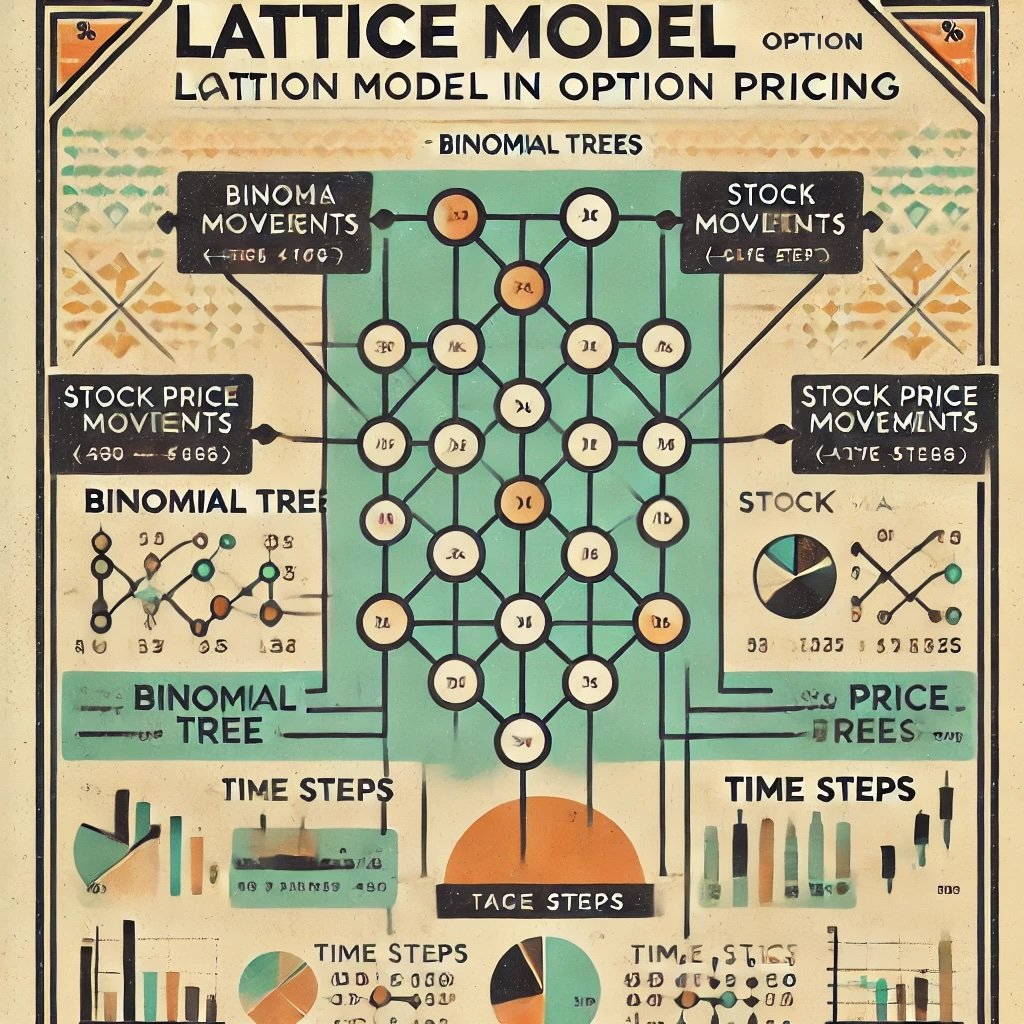
There’s no single “best” model for every situation.
Among the plethora of pricing methodologies, two in particular often spring to mind. First is the Black-Scholes model, a well-known analytical formula that elegantly revolutionized trading when introduced in the 1970s. Second are numerical methods, which rely less on closed-form solutions and more on iterative computations to arrive at an answer. Within that second category, the lattice model stands out for both its conceptual clarity and adaptable nature. Constructed as a tree (or lattice), it evolves step by step through time, simulating possible paths an underlying asset’s price could take. Through this discrete framework, the model then calculates the option’s value at each node, working backward to the present.
Why might we care about a model that requires us to build a branching tree of upward and downward moves—particularly when other approaches can yield faster results or produce closed-form solutions? The answer, in part, is flexibility. The lattice model can handle many complexities that simpler models might not easily accommodate, such as:
- American-style options that can be exercised at any point up to expiration.
- Path-dependent options (e.g., barrier options), whose value depends on whether the underlying crosses certain thresholds.
- Changing dividends or variable volatility patterns across different periods.
The lattice approach brings an intuitive, step-by-step methodology that many traders and risk analysts can understand without delving into advanced calculus. Instead of relying on assumptions of constant volatility or continuous trading that might deviate from real-world conditions, you break time into smaller slices, see how the underlying might move up or down in each slice, then figure out how the option’s payoff evolves. By methodically filling out the nodes of this lattice, the model returns a price at the root node—the price “now.”

Evolution of Lattice Models
While the concept of a lattice in mathematics is centuries old, its application to option pricing emerged prominently in the 1980s and 1990s with the binomial model (often credited to Cox, Ross, and Rubinstein). The binomial variant gave way to more nuanced forms, like the trinomial model, which added a neutral or sideways step, granting potentially smoother transitions. Over time, these lattice-based approaches proved especially useful for pricing American options, which require the possibility of early exercise—a scenario more challenging for purely analytical formulas to handle effectively.
The binomial tree changed the game.
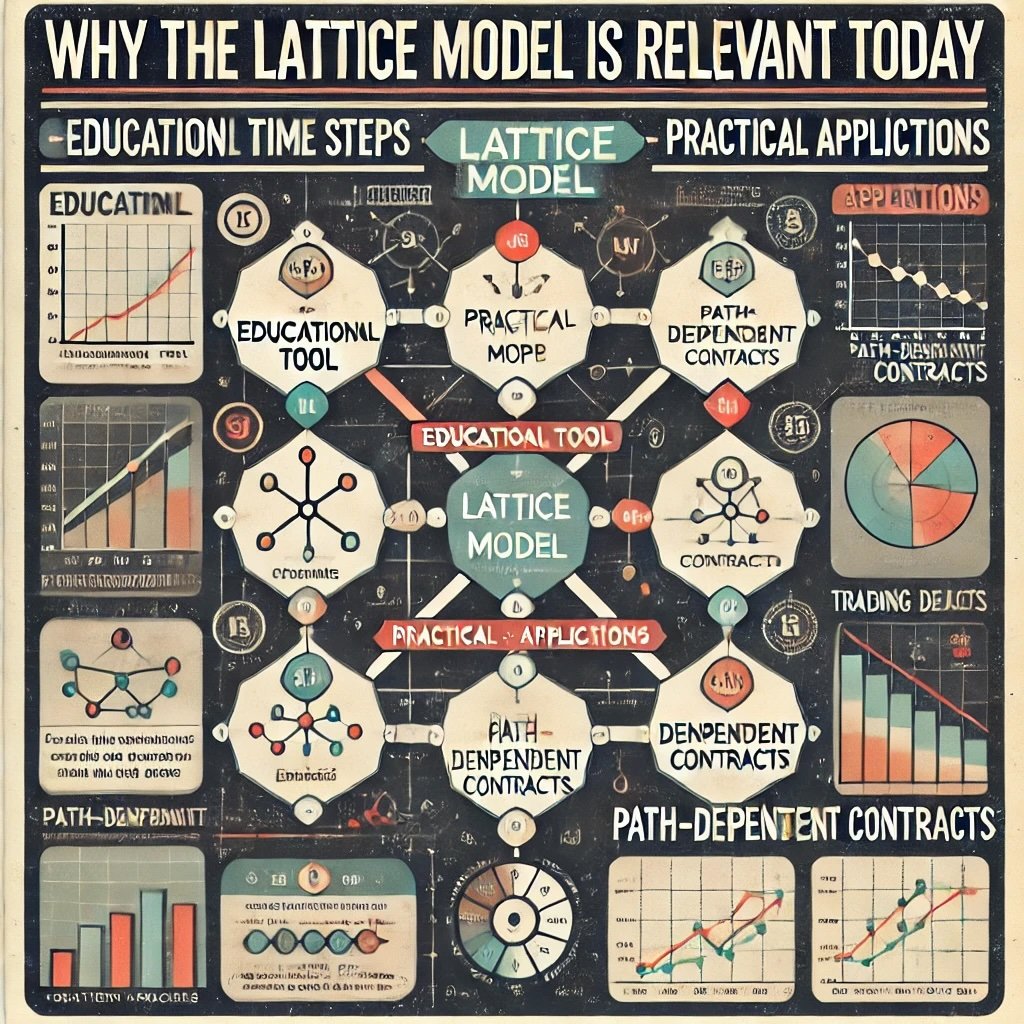
Why the Lattice Model Is Relevant Today
Even though large financial institutions might rely on more computationally intensive frameworks, the lattice model retains its educational and practical importance. It’s often taught in finance courses as a gateway to understanding how option pricing evolves with discrete time steps. In real trading desks, it remains invaluable for dealing with complex, path-dependent contracts or for calibrating simpler models. Moreover, the binomial or trinomial approach offers a user-friendly, visual explanation of how underlying asset prices, exercise decisions, and discounting interplay.
If you’re an options enthusiast, a risk manager looking for robust solutions, or a student bridging academic theory with the practicalities of the trading floor, understanding the lattice model can sharpen your ability to price derivatives accurately. The best part? You don’t necessarily need advanced calculus or the assumption of constant volatility to make it work. Instead, you just need a methodical approach to building a tree of possible outcomes. Let’s begin by revisiting the essentials of option pricing and placing the lattice model in a broader context.
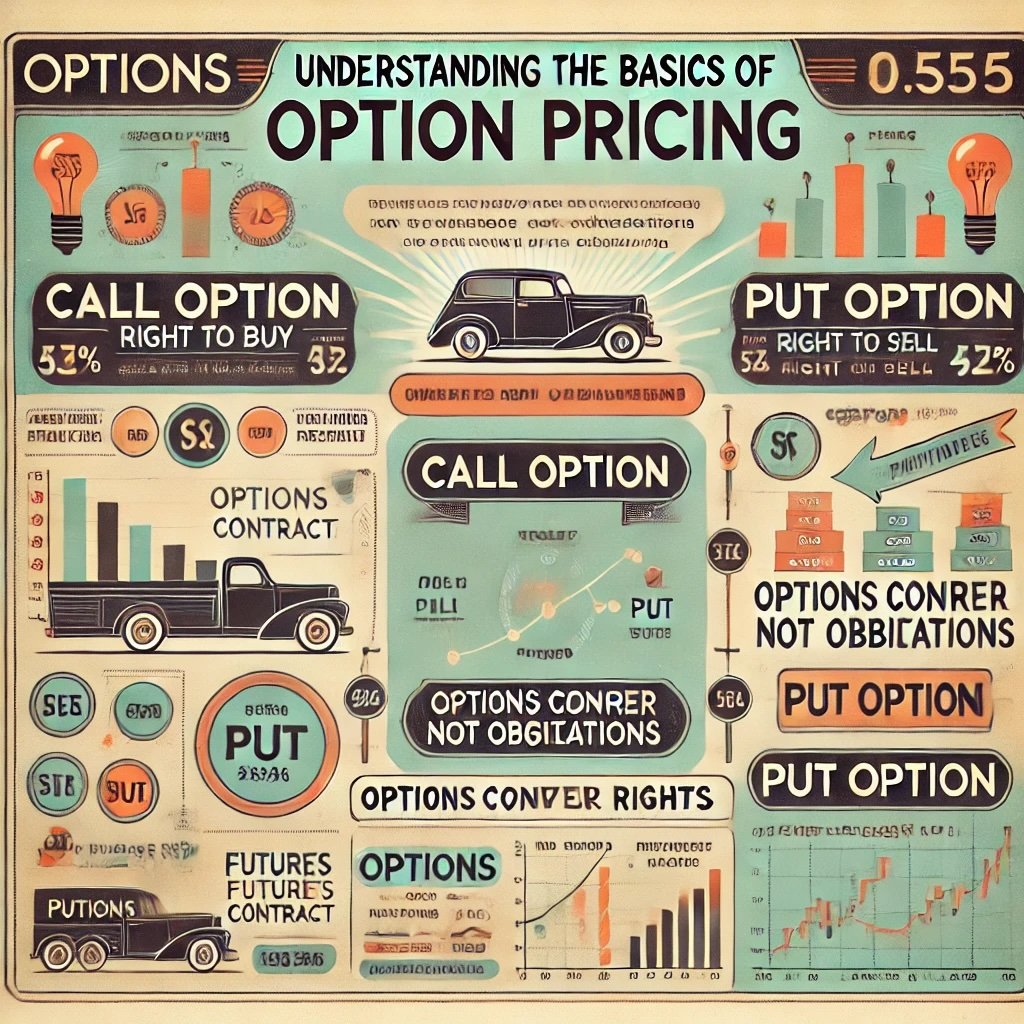
Understanding the Basics of Option Pricing
Before we dive headlong into the lattice model itself, it’s crucial to ground ourselves in the bedrock principles of options and their pricing. An option, at its simplest, is a contract that grants the holder certain rights—like buying or selling an underlying asset—without imposing any obligation to do so. This characteristic sets options apart from, say, futures contracts, where both sides are bound to fulfill the agreement.
Options convey rights, not obligations.
What Are Options?
Call options give the holder the right to buy an asset at a predetermined strike price within a specific timeframe, while put options give the right to sell. Each option also has:
- Premium: The price paid by the buyer to the seller (writer) for obtaining that right.
- Expiration Date: The date or period by which the option can be exercised. For American style, exercise is allowed any time up to expiration; for European style, only at expiration.
- Strike Price: The fixed price at which the underlying can be bought or sold if the holder exercises the option.

Why Pricing Models Matter
In the simplest sense, an option’s fair value depends on how likely it is that exercising the option will yield a profit by the time it expires—and by how much. More specifically, the cost of an option in the market stems from:
- Intrinsic Value: The direct difference between the underlying’s current price and the strike, when favorable. For example, if a call has a strike of $50 and the underlying is $55, it has $5 of intrinsic value. If the underlying is below $50, the call’s intrinsic value is zero (out of the money).
- Time Value (Extrinsic Value): Reflects the possibility that the option could become more profitable (or less profitable) between now and expiration. This portion is influenced by time to maturity, underlying volatility, interest rates, and potential dividends.
A major goal of pricing models is to produce a consistent valuation method that incorporates these factors, along with assumptions about the underlying’s volatility and how it evolves over time. If you know the “fair” price, you can exploit mispricings in the market or systematically hedge your positions. Without such frameworks, pricing derivatives could become guesswork.

Overview of Popular Models
- Black-Scholes Model: This closed-form solution revolutionized option trading by providing a direct formula for European options. It assumes constant volatility and a lognormal distribution of underlying prices, among other simplifications. Quick to use, it underpins much of modern derivatives trading, though it can be less accurate for American options or path-dependent structures.
- Monte Carlo Simulation: Takes a more brute force approach by randomly simulating thousands (or millions) of possible price paths, computing payoffs for each path, and discounting them back to the present. This method can handle complicated payoffs but is computationally heavy.
- Lattice Models (Binomial, Trinomial): Build a discrete-time tree that splits at each step into up-moves or down-moves (and sometimes neutral moves, in the trinomial case). You can incorporate real-world complexities such as early exercise for American options, shifting volatility, or dividend schedules with relative ease.
Models vary in assumptions and complexity.
Thus, where does the lattice model fit into this picture? It strikes a middle ground: more flexible and realistic than a single closed-form formula, yet simpler (for certain classes of problems) than a broad Monte Carlo approach. Particularly for American-style options or scenarios where the underlying’s volatility or dividends are not constant, the lattice model offers a well-regarded path to reliable pricing. Let’s explore exactly how it works in the next section.
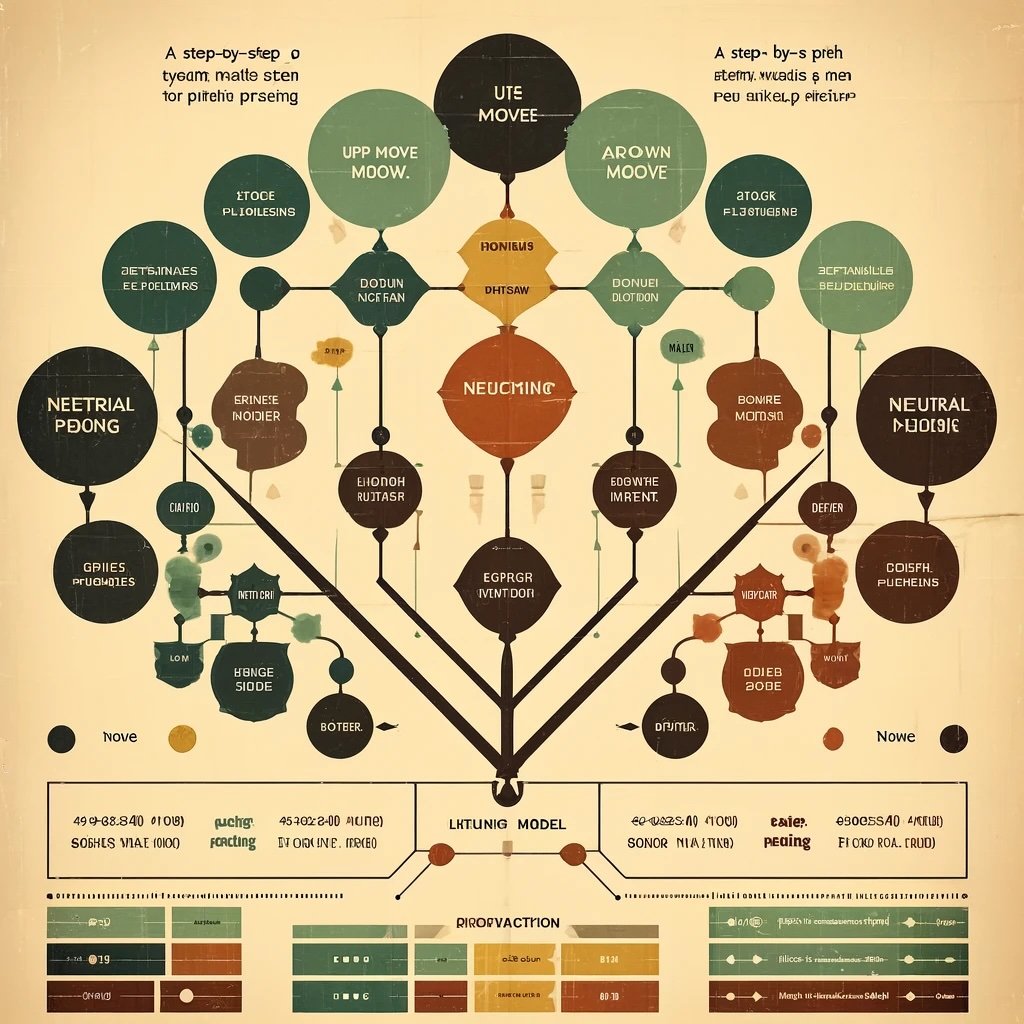
What Is the Lattice Model?
The lattice model in option pricing is a discrete-time, tree-based methodology for valuing derivatives. Instead of a continuous process, we break the option’s life span—let’s say from now until expiration—into smaller intervals. At each interval, the model envisions that the underlying asset’s price can move in one of several possible directions. For the binomial approach, there are typically two moves per step: an up move or a down move. For a trinomial approach, you add a third possibility: the underlying might move up, stay about the same, or move down. This branching creates a lattice or “tree” of potential price outcomes as time moves forward.
A step-by-step path to pricing.
Definition and Structure
At the final time step (the expiration of the option), each branch of the tree terminates in a node representing the underlying’s price. We can easily compute the option’s intrinsic value at each ending node: for a call, it’s max(UnderlyingPrice - Strike, 0); for a put, it’s max(Strike - UnderlyingPrice, 0). Then, the logic is that since an option’s value at an earlier node is the discounted expected value of the next nodes, we move backwards through the tree, applying probabilities for up- or down-moves and discounting by the risk-free rate (or whichever discount factor is appropriate).
The resulting figure is a lattice—a grid of possible states for each time increment. On top of this, if the option is American style, we check at each node whether immediate exercise is more profitable than holding the option. If so, the option’s value at that node becomes the intrinsic value. This process is known as a backward induction approach.
How It Works in Steps
- Set Up Parameters: We define the length of each time step (Δt), the up factor (u), down factor (d), and risk-neutral probabilities (p) for up and down moves. We also account for interest rates and any dividend yields.
- Build the Price Tree: Starting from the current underlying price, each step yields possible next prices: e.g.,
Price_up = Price * uandPrice_down = Price * d. This repeats for every node until we fill out a tree covering all possible paths. - Compute Option Values at Maturity: At the final time step, the payoff is straightforward: for calls,
max(0, Price - Strike), for puts,max(0, Strike - Price). - Backward Induction: At each prior node, we calculate the option value by taking the expected payoff of the next step (using p and 1-p), discounting it back, and if American, comparing it to the intrinsic value for immediate exercise.
- Root Node: Eventually, we end up at the root node, which represents the option’s fair value now, given the chosen parameters.
We climb backward from the end.
Types of Lattice Models
- Binomial Model
- Each step has two possible outcomes (up or down).
- Common for simpler or less time-consuming calculations; a standard approach taught in many finance courses.
- The “Cox-Ross-Rubinstein (CRR) Model” sets specific formulas for u, d, and p to ensure consistency with drift and volatility over time.
- Trinomial Model
- Each step allows three outcomes: up, unchanged, or down.
- Provides a finer resolution that can reduce error or better approximate real price behaviors.
- More computational nodes but often more stable for certain exotic structures.
In practice, you can extend the concept to more complex scenarios: multi-dimensional lattices for multi-asset options, variable volatility that changes node to node, or inclusion of path-dependent features.
How the Lattice Model Differs from Other Methods
- Versus Black-Scholes: The Black-Scholes formula is neat and closed-form for European options without dividends or for constant dividends. It’s less direct for American options or for complex conditions. Meanwhile, the lattice model explicitly captures early exercise possibilities and path intricacies.
- Versus Monte Carlo: Monte Carlo simulates numerous price paths randomly, then averages outcomes. The lattice is more methodical, enumerating discrete possibilities in a structured tree. Monte Carlo might be more convenient for high-dimensional derivatives with multiple underlyings, but the lattice is more intuitive for single underlying American options.
Example of a Simple Binomial Tree
Imagine a stock at $100, with one year to expiration, a risk-free rate, and no dividends. Suppose for each quarter, the stock can either go up by 10% or down by 10%. Over four quarters, you’d form a tree with 16 final nodes (2^4). Then, for each final node, you have the option’s payoff. By discounting from the final nodes back to the present through intermediate nodes, you find the fair option price. If it’s an American call on a dividend-paying stock, or an American put, you’d also check each node to see if exercising yields more than continuing to hold the option.
Step by step, node by node, we find the price.
Thus, the lattice model is effectively an enumerated scenario analysis. It is more computationally demanding than plugging numbers into a single formula, but it’s also more flexible, bridging the gap between simpler closed-form solutions and more complicated numerical simulations that can handle multiple random factors. Next, we’ll see how these same attributes translate into tangible advantages for the lattice model, especially in real-world derivative pricing.
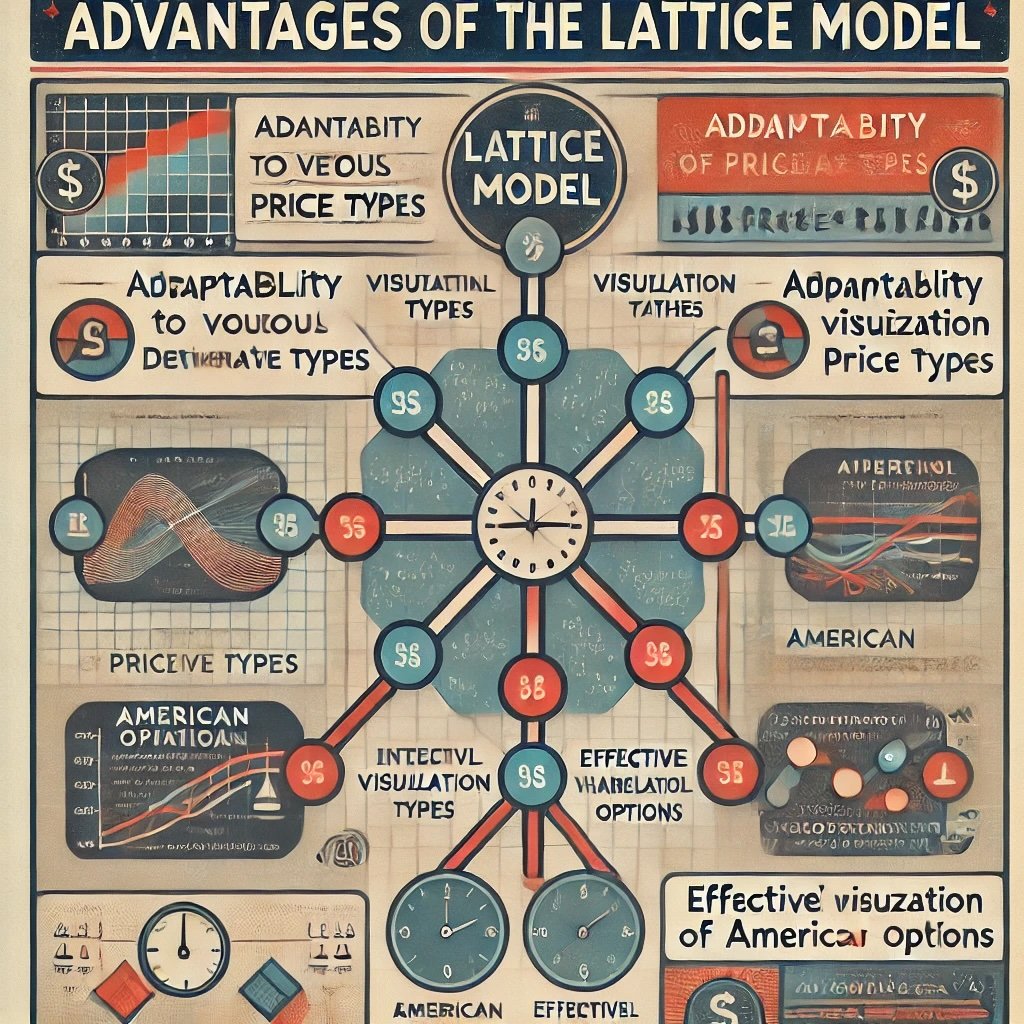
Advantages of the Lattice Model
With a clear sense of how a lattice approach enumerates possible price paths for an underlying asset, we can appreciate why so many practitioners rely on it, especially in educational contexts and for certain real-world derivative problems. While alternative models each carry their own pros, the lattice model’s combination of clarity, flexibility, and ability to handle American options stands out.
Adaptable, intuitive, thorough.
1. Handling American-Style Options
One of the defining strengths of the lattice model is how naturally it accommodates American options. American calls or puts can be exercised any time up to expiry, a feature that can be crucial if the underlying pays dividends (for calls) or if protecting downside swiftly is beneficial (for puts). In a binomial or trinomial tree, at each node, you can:
- Compare: The option’s hold value (discounted expected payoff from continuing to hold) vs. the immediate exercise value.
- Pick the higher of the two. This effectively ensures the model respects the early-exercise boundary if it’s optimal.
This check is straightforward because you have discrete time steps. By contrast, the original Black-Scholes formula was derived for European options (exercise only at maturity), making it incomplete for American-style possibilities unless certain modifications or specific conditions apply.
2. Realistic Modeling of Various Features
Markets rarely follow a neat path with constant volatility or interest rates. Lattice models let you incorporate more nuanced assumptions without huge leaps in complexity:
- Dividends: If the underlying pays a known or forecasted dividend at certain times, you can reduce the asset price node by the dividend amount or treat it within the model’s transitions.
- Local Volatility: The up/down factors (u, d) could vary from step to step, reflecting a term structure or known event that changes volatility mid-process.
- Path-Dependent Payoffs: For exotic options like barrier options or lookbacks, you can track whether the underlying crosses or touches a barrier. That’s simpler to do in a lattice than forced to rely on an approximated analytic method.
Flexibility is vital in complex derivatives.
3. Transparency and Teaching Utility
From an educational standpoint, the lattice method offers a visual, stepwise demonstration of how an option’s value arises:
- Construct: A tree or “lattice” of possible prices for each time increment.
- Compute: Final payoffs at the end nodes.
- Back-Propagate: Value each node by discounting from the subsequent nodes.
- Instruct: Students and new traders can see precisely how changes in volatility or the up/down factors shift the entire lattice.
This transparent approach helps novices grasp the concept that an option’s present value is essentially the discounted expectation of its future payoffs in all possible price states, adjusted for exercise choices if it’s an American option. By visualizing the nodes, it’s easier to interpret how an upward move in the underlying modifies the option’s potential.
4. Ease of Incremental Accuracy Adjustments
If you want a more accurate result, you can simply:
- Add More Time Steps: For a 12-month option, instead of 12 steps, you can do 24 or 52, making the model approach a finer resolution.
- Refine Up/Down Magnitudes: Adjust how large each move is, or use variable steps for different segments.
- Switch from Binomial to Trinomial: Gaining a middle path that might reflect stable or minimal movement, reducing error.
While each extra step or dimension can balloon the total nodes, in modern computing environments, going from a 12-step binomial tree to a 100-step tree is rarely prohibitive for a single option’s valuation. For large-scale derivative portfolios, you might consider performance, but a well-coded version can handle many instruments.
5. Potentially More Accurate Than Simplistic Closed-Formulas in Specific Scenarios
While Black-Scholes is revolutionary, it relies on somewhat strict assumptions: constant volatility, no early exercise, continuous-time modeling, etc. If your scenario deviates substantially—like an American put on a dividend-paying stock that might be exercised early—the binomial or trinomial lattice can yield more realistic valuations. This is because the model physically checks each node for possible early exercise or dividend ex-dates.
Example: An American call on a dividend-paying stock might see best exercise right before the ex-dividend date if the dividend is large enough to justify forfeiting remaining time value. A binomial approach can factor this in. By contrast, a naive Black-Scholes approach might ignore the effect of dividends or treat them in a simplified manner, missing some nuance.
In complexity, the lattice can outshine simpler formulas.
6. Bridge to Complexity
Finally, the lattice model is a stepping stone for more advanced numerical methods. For instance, some exotic derivatives demand path dependencies that only a full-blown Monte Carlo or PDE approach can handle at scale. However, the lattice method can remain viable for single underlying options or moderate complexity. You can incorporate partial path dependence (like an up-and-out barrier option) by tracking whether a barrier was breached in each node path. This capacity to handle mild path dependencies makes the approach more versatile than a purely closed-form system.
In sum, the lattice model stands as a favored approach for a wide range of derivatives, offering a balance of clarity, adjustability, and direct computation. It’s not perfect, though, and next we’ll discuss some of the challenges, including computational intensity and how it compares to other widely used models like Monte Carlo or Black-Scholes.

Challenges and Comparisons to Other Models
While the lattice model offers robust flexibility and a user-friendly conceptual framework, it’s not without drawbacks. Like all modeling techniques, it rests on certain assumptions about up-moves, down-moves, and risk-neutral probabilities that might not fully mirror real-world complexities—especially in extremely volatile or multi-factor environments. Let’s consider the challenges in more detail, then juxtapose the lattice approach with other prevalent models in the option pricing ecosystem.
Weighing the weaknesses.
1. Computational Intensity
One of the lattice model’s biggest issues is that each extra time step doubles (for a binomial) or triples (for a trinomial) the number of nodes. If you want high accuracy—say 200 or 300 discrete time steps—you’re looking at thousands, even millions, of nodes for a single option. While modern computers can handle a decent number of calculations quickly, it can still be slower than a closed-form formula or simpler approach for a large portfolio of many different options.
Scaling Problem: If you run multi-asset options or multi-factor processes, the node count might expand exponentially. This can become unwieldy, forcing either a coarser grid (less accurate) or a more advanced numerical method (like partial differential equation solvers or Monte Carlo).
2. Accuracy vs. Complexity Trade-Off
More steps yield greater precision in the final price. But more steps also magnify your compute time and memory usage. For straightforward, single underlying assets with moderate time horizons, the binomial model with ~50–200 steps might be enough. For more elaborate or longer-dated instruments, it’s possible you need a large number of steps to approximate continuous price movement. Even then, lattice-based results might deviate from “true” real-world values if your up/down factors or volatility assumptions aren’t well-chosen.
Trinomial vs. Binomial: The trinomial approach can reduce error because it can approximate the underlying’s distribution more finely. But that means each time step has three branches, not two, leading to more nodes. This again underscores the typical tension: better accuracy requires heavier computations.
Greater detail, greater resource demands.
3. Whipsaws in Highly Volatile Markets
While the lattice does allow for varying volatility at different nodes, you still rely on discrete transitions. In highly volatile markets with abrupt price jumps or complex intraday dynamics, the model may oversimplify that wildness into a limited set of up/down outcomes. Real prices could gap outside your scenario range, especially if a single step is assigned too wide a time chunk. This might hamper the model’s accuracy unless you refine or break steps further.
Implied volatility Surprises: If implied volatility changes drastically mid-option life (e.g., due to an unexpected event), your initial assumptions about up/down or probability might be invalid. The lattice might not reflect new reality unless you recalibrate or redo the entire tree.
4. Recalibration Needs
In practice, a robust lattice-based pricing approach can require recalibration—adjusting your up/down and probability parameters to match current market implied volatilities or forward curves. This is not trivial and often parallels how practitioners calibrate the Black-Scholes model or Monte Carlo processes to market data. Failure to calibrate carefully can yield a mispriced option. Meanwhile, if the market data changes daily, you might have to recompute new lattices frequently.
5. Comparison with Black-Scholes
Black-Scholes is an analytical solution delivering quick answers with minimal computational overhead. If you’re pricing a plain-vanilla European call on a non-dividend-paying stock, it’s elegant and easy. In that scenario, the lattice model might be overkill. However, if your scenario is:
- American Option requiring early exercise checks, or
- Dividend adjustments for a stock that pays variable dividends, or
- Irregular volatility structures,
the Black-Scholes formula can falter or need approximations. The lattice model thrives in these areas because it can incorporate early exercise or dividend ex-dates at each node. So it’s about matching the approach to the complexity at hand.
Speed: For a single vanilla European option, Black-Scholes might be faster. For multiple, or for advanced modifications, the lattice might be just as good or better in reflection of realistic features. Also, you can interpret the lattice results more transparently.
6. Comparison with Monte Carlo Simulations
Monte Carlo is widely employed for complex, multi-dimensional derivatives or scenarios where path dependence is strong and the user wants approximate solutions from large-scale simulations. The lattice method is more structured and might be more straightforward for single underlying, American-style constraints. Meanwhile, Monte Carlo might handle correlated underlyings or advanced payoffs more easily once you code it. However:
- Monte Carlo often requires a huge number of simulations to achieve stable results, especially if the payoff has early exercise features. While you can embed “least squares” or advanced methods for early exercise, the coding complexity can be high.
- Lattice can be more precise and direct for path-dependent or early-exercise features if you only have one or two underlyings. For more complicated exotic payoffs or multiple correlated assets, though, a multi-dimensional lattice can balloon in complexity.
Conclusion: Each method has a sweet spot. Lattice stands as a robust middle path that’s more flexible than purely closed-form solutions while typically easier to conceptualize than a full-blown Monte Carlo for single underlying or simpler structures.
Choose the right tool for each job.
In sum, the lattice approach is no universal panacea. It demands some computational power for finer granularity, relies on step-based assumptions, and can still produce errors if your input parameters or calibrations are off. Nonetheless, it’s widely valued for its synergy of transparency, adaptability, and direct handling of early-exercise complexities. In our final section, we’ll unify these insights, reflect on how to properly adopt a lattice-based approach, and highlight the model’s place in a diversified toolkit for option pricing.
Lattice Model in Option Pricing — 12-Question FAQ (binomial, trinomial & beyond)
1) What is a lattice model in plain English?
A lattice model prices options by mapping many small, discrete steps in time. At each step the underlying can move up/down (binomial) or up/flat/down (trinomial). You compute payoffs at expiration and work backward (backward induction) to today’s fair value.
2) Why use a lattice instead of Black-Scholes?
Flexibility. Lattices natively handle American exercise, discrete dividends, piecewise/term-structured volatility, and path-dependent features (e.g., barriers) with clear logic. Black-Scholes is elegant for European vanilla options but needs tweaks for these cases.
3) What are the core lattice ingredients?
Time step Δt
Up/down factors (u, d) per step
Risk-neutral probabilities (p, 1−p) consistent with interest rate, dividend yield, and volatility
These define the price tree, from which option values are rolled back.
4) How are u, d, and p chosen?
Commonly via Cox-Ross-Rubinstein (CRR) or Jarrow-Rudd parameterizations so the one-step process matches the desired volatility and the tree is arbitrage-free under risk-neutral dynamics (i.e., expected growth = risk-free minus dividend yield).
5) How does backward induction actually work?
At maturity: set each node to the intrinsic payoff (e.g., call = max(S−K,0)).
At prior nodes: value = discounted expectation of next-step node values using p and (1−p).
For American options: take the max of continuation value and immediate exercise value at each node.
6) When do I prefer trinomial over binomial?
Trinomial trees often converge faster/smoother, especially with long maturities or high volatility. The extra “middle” branch better captures small moves and helps stabilize barrier or local-volatility pricing—at the cost of more nodes.
7) How many time steps do I need?
Enough for convergence. For plain equity options, dozens to a few hundred steps often suffice. Use a step-refinement test (increase N until price changes are negligible) and consider trinomial if binomial converges slowly.
8) How are dividends handled?
Discrete dividends: reduce the stock price at ex-date nodes, or build a dividend-adjusted tree.
Continuous dividend yield (q): incorporate q directly into p (risk-neutral drift becomes r−q).
This enables early-exercise logic (e.g., American calls near large dividends).
9) Can lattices price exotic options?
Yes—particularly barriers, forward-start, some lookbacks, and compound options by tracking extra state (e.g., “has barrier been hit?”). Very path-heavy or multi-asset payoffs may be more scalable with Monte Carlo or PDE methods.
10) What are the main pitfalls?
Mismatched parameters (u, d, p not consistent with σ, r, q)
Too few steps (poor convergence)
Barrier misalignment (barrier between nodes → use smaller Δt or alignment tricks)
Ignoring early-exercise checks for American options
11) How do lattices compare with Monte Carlo and PDEs?
Lattice: intuitive, great for American/some path features on a single asset.
Monte Carlo: scalable for complex, multi-asset and deeply path-dependent payoffs; early exercise needs LSM or similar.
PDE/finite-difference: very accurate for continuous models and boundary conditions; excellent for term structures, but more technical to implement.
12) What’s a practical workflow to build one?
Choose N, u, d, p consistent with r, q, σ, Δt.
Build price tree; layer in dividends/vol shifts.
Compute terminal payoffs.
Roll back using risk-neutral averaging and discounting, checking American exercise at each node.
Refine N until the price stabilizes; validate Greeks and sanity-check against benchmarks.
Conclusion
Lattice models—whether binomial, trinomial, or more sophisticated variants—remain a cornerstone of option pricing techniques, bridging the gap between the elegant but limited world of closed-form solutions (like Black-Scholes) and the highly customizable but computationally heavy domain of Monte Carlo simulations. By constructing a discrete-time tree and working backward from final payoffs, practitioners can handle everything from American early exercise to specific dividend schedules, path dependencies, or stepwise changes in volatility assumptions.
They’re practical, versatile, and conceptually clear.
Recap of the Lattice Model
- Tree-Based: The method divides the option’s life into intervals, generating possible “up” or “down” moves (or up, down, and neutral, in trinomial). Each node in the lattice represents a distinct potential state of the underlying.
- Backward Induction: By calculating payoffs at the terminal nodes (where the option expires), then discounting them back at each prior step, the model arrives at the present fair value. If the option is American, it compares the hold value with the immediate exercise payoff at each node.
- Flexible: You can incorporate variable volatility, dividends, or more complex contract features. The user chooses the step count, the up/down factors, and the probabilities in alignment with expected or observed market conditions.
When to Use the Lattice Model
- American-Style Options: Because it easily checks for early exercise possibilities, the lattice is a go-to approach for calls or puts that can be exercised anytime.
- Moderate Complexity: For an option that might have dividends or path dependencies but not so many complexities that you need a multi-asset or extremely high-dimensional approach.
- Educational Settings: Because it’s visually demonstrable as a tree, novices can quickly grasp the concept of discounting from the future payoff back to the present.
Real-World Adoption
In practice, many institutional trading desks rely heavily on Black-Scholes for quick referencing of European or standard options, adjusting implied volatility parameters as needed. However, for American options on dividend-paying stocks, or for specialized payoffs where the underlying environment changes over time, the lattice approach frequently surfaces. It might also be used as a cross-check or fallback: if the results from a simpler approach look suspicious, an analyst might build a binomial or trinomial tree to confirm or refine the estimated fair value.
Final Thoughts
While the lattice model can appear old-fashioned in an era of algorithmic trading and real-time analytics, it retains a unique blend of intuitive structure and customizability. It invites a user to ask: “In the next time step, how might the price move? And the step after that?”—thereby constructing a methodical map of all plausible futures. This approach not only clarifies how the final option payoff emerges, but also offers an explicit vantage point to evaluate when early exercise or other mid-path decisions become optimal. For students, it’s an invaluable learning instrument, revealing the skeleton of discounted payoff logic that underpins all option pricing.
A timeless method amid modern complexities.
As your own trading or risk management evolves, the lattice model may well prove indispensable for certain tasks, particularly for those with an American angle or moderately complicated structures that deviate from the simpler assumptions behind closed-form formulas. Even if you end up preferring Monte Carlo in large-scale or multi-factor contexts, or you rely on Black-Scholes for quick quoting, your grasp of lattice fundamentals ensures you can pivot or double-check results when conditions warrant. By appreciating each model’s strengths, weaknesses, and proper domain, you enhance your capability to tailor the right solution for every unique option or strategy.
Important Information
Comprehensive Investment Disclaimer:
All content provided on this website (including but not limited to portfolio ideas, fund analyses, investment strategies, commentary on market conditions, and discussions regarding leverage) is strictly for educational, informational, and illustrative purposes only. The information does not constitute financial, investment, tax, accounting, or legal advice. Opinions, strategies, and ideas presented herein represent personal perspectives, are based on independent research and publicly available information, and do not necessarily reflect the views or official positions of any third-party organizations, institutions, or affiliates.
Investing in financial markets inherently carries substantial risks, including but not limited to market volatility, economic uncertainties, geopolitical developments, and liquidity risks. You must be fully aware that there is always the potential for partial or total loss of your principal investment. Additionally, the use of leverage or leveraged financial products significantly increases risk exposure by amplifying both potential gains and potential losses, and thus is not appropriate or advisable for all investors. Using leverage may result in losing more than your initial invested capital, incurring margin calls, experiencing substantial interest costs, or suffering severe financial distress.
Past performance indicators, including historical data, backtesting results, and hypothetical scenarios, should never be viewed as guarantees or reliable predictions of future performance. Any examples provided are purely hypothetical and intended only for illustration purposes. Performance benchmarks, such as market indexes mentioned on this site, are theoretical and are not directly investable. While diligent efforts are made to provide accurate and current information, “Picture Perfect Portfolios” does not warrant, represent, or guarantee the accuracy, completeness, or timeliness of any information provided. Errors, inaccuracies, or outdated information may exist.
Users of this website are strongly encouraged to independently verify all information, conduct comprehensive research and due diligence, and engage with qualified financial, investment, tax, or legal professionals before making any investment or financial decisions. The responsibility for making informed investment decisions rests entirely with the individual. “Picture Perfect Portfolios” explicitly disclaims all liability for any direct, indirect, incidental, special, consequential, or other losses or damages incurred, financial or otherwise, arising out of reliance upon, or use of, any content or information presented on this website.
By accessing, reading, and utilizing the content on this website, you expressly acknowledge, understand, accept, and agree to abide by these terms and conditions. Please consult the full and detailed disclaimer available elsewhere on this website for further clarification and additional important disclosures. Read the complete disclaimer here.




